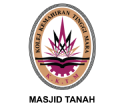- Blog
- Stories
- Experience
Transform Your Business with innovative solutions
Whether Your Business Is Early In Its Journey Or Well On Its Way To Digital Transformation, REKA’s Solutions And Technologies Help Solve Your Toughest Challenges.
PRODUCTS

Data Platform
Link, Monitor & Control Your Data and Perform Better Business Decisions
Crowd Analytics
Understand Your Traffic And Audience Around Your Assets

Autonomous Cloud
Power Up Your Operations With Robotics And Automation Tools
PROFESSIONAL SERVICES

REKA Studio
Bring Your Product From Concept To Market With A Team Of R&D Experts
- Experiments
- About
Explore Our Origin
Learn about what we do and our mission statement

Passionate About Tech
Learn about what we do and our mission statement
- Get In Touch

















